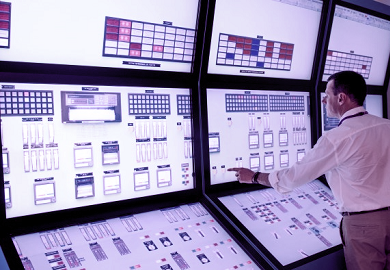Nuclear power plant operating personnel are subject to a continuous retraining program in simulators with the aim of maintaining and improving their operating skills, as well as renewing their operating licenses granted by the Nuclear Safety Council (CSN). In these exhaustive update programs, training is carried out in a multitude of simulated accident scenarios, by monitoring the operating procedures of the plants.
As part of a permanent innovation process, the CSN requests the plants to design new retraining scenarios, including those involving flooding in plant areas due to pipe breaks that cause the failure of different equipment.
With the training on this type of scenarios, it is intended to verify the capacity of the power plant to carry out the necessary alignments in the worst possible conditions and within the time limits for its realization. The objective is to determine if it is feasible to maintain the plant in a safe and stable situation with the existing procedures and the means available at the plant.
What are the flood scenarios
A simulation scenario is a representation of a plant concrete situation, on which the operator can be trained. There is a great versatility in the development of flood scenarios, which can be defined by the following information:
- Break zone.
- Maximum breaking flow.
- Maximum volume of water discharged.
- Routes of propagation.
- Consequences of the failure.
- Hypothesis and operational considerations of the plant with which the accident is postulated.
- Operations expected for the insulation.
- Estimated break isolation time.
How flood scenarios are designed and simulated
In previous years, Tecnatom has developed and validated fire scenarios in Full Scope Simulators (FSS) of several Spanish Nuclear Plants. The methodology applied for the design and subsequent simulation of flood scenarios is similar to that followed in fire scenarios:
1. The specification of the selected flood scenario is provided by the Safety and Licensing area of the plant after the deterministic analysis of floods.
2. Based on the initial information, Tecnatom Training School team identifies the malfunctions, plant actions and instrument alterations necessary to simulate the line break that causes room flooding and postulated equipment failures.
3. The final definition of the simulated scenario with the defined list of malfunctions, plant actions and instrument alterations must be approved by the Training area of the reference plant.
4. All new malfunctions are individually developed and tested by Simulator Maintenance (SIMM).
5. The simulated scenario is specified with the list of malfunctions and the expected sequence of events: scenario definition.
6. The design of the new scenario is integrated and tested in the FSS by SIMM.
7. The pilot test of the scenario is carried out with the participation of instructors from the Training School and/or plant personnel.
8. The scenario is evaluated by running it on the simulator with a shift operating the plant, who will not have prior knowledge of the scenario
9. All the documentation committed to the reference plant is published: Definition of the scenario, Session guide, Evaluation report, etc.
Therefore, this type of project demonstrates the great contribution of Full Scope Simulators in the field of nuclear safety, due to its capacity to reproduce the response of the plant to multiple events, including the aforementioned flood scenarios, validating both the design and the procedures of the plant. Full Scope Simulators have the simulation models of the reference nuclear power plant systems as well as the different scenarios developed with tools owned by Tecnatom.
Tecnatom has extensive experience in validating flood scenarios, as you can see by clicking on the following link:








